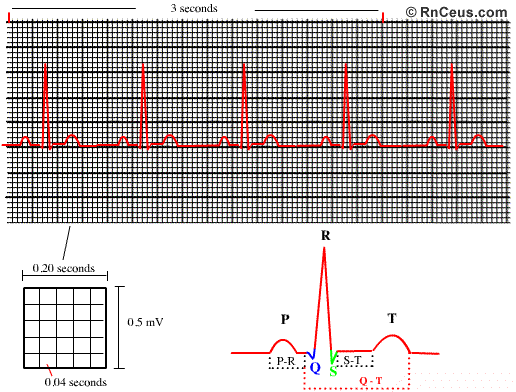Submitted by Dr T on June 24, 2011 – 8:34am
Question:
Hi Dr T:
My Pre-op ECG read vertical axis unusual for age but other wise normal. Can you tell me what this means (vertical axis)?
My Pre-op ECG read vertical axis unusual for age but other wise normal. Can you tell me what this means (vertical axis)?
I cannot identify what the unusual feature is of course, but this explains the vertical axis of an EKG:
EKG paper is a grid where time is measured along the horizontal axis.
- Each small square is 1 mm in length and represents 0.04 seconds.
- Each larger square is 5 mm in length and represents 0.2 seconds.
Voltage is measured along the vertical axis.
- 10 mm is equal to 1mV in voltage.
- The diagram below illustrates the configuration of EKG graph paper and where to measure the components of the EKG wave form

Heart rate can be easily calculated from the EKG strip:
- When the rhythm is regular, the heart rate is 300 divided by the number of large squares between the QRS complexes.
- For example, if there are 4 large squares between regular QRS complexes, the heart rate is 75 (300/4=75).
- The second method can be used with an irregular rhythm to estimate the rate. Count the number of R waves in a 6 second strip and multiply by 10.
For example, if there are 7 R waves in a 6 second strip, the heart rate is 70 (7×10=70).
Hope this helps,
(From: How to Read an EKG Strip)
